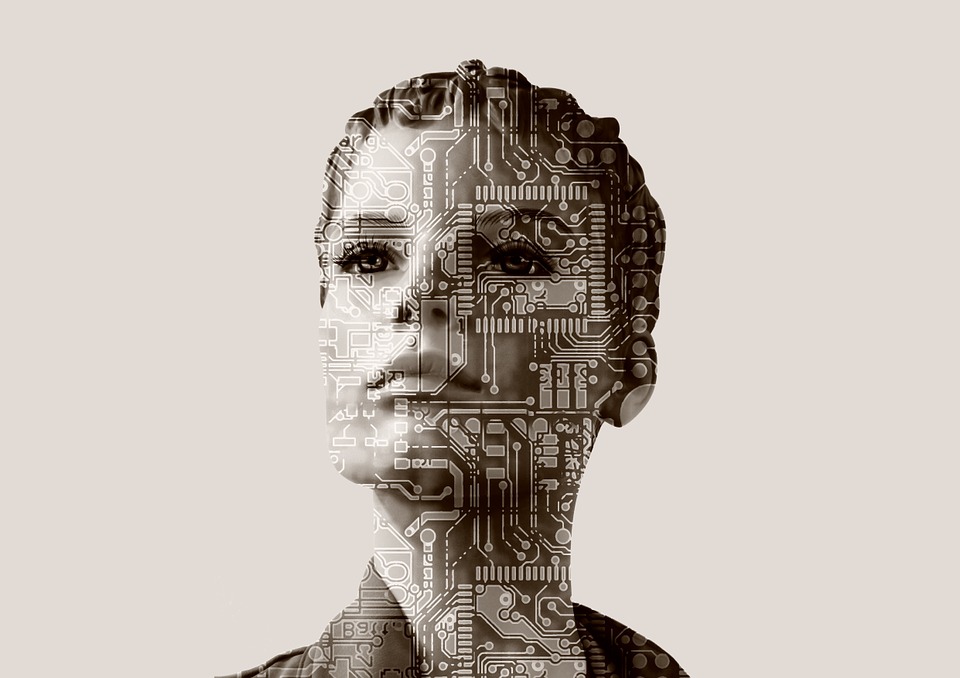
But the “AI” that was dreamed up almost five decades ago is pretty different from the AI that actually exists today and that is being integrated into all aspects of our lives. In fact, AI is a very broad term covering a wide range of technologies — not just robots 😉 Artificial Intelligence can be any technology that mimics human intelligence or “cognitive functions that humans associate with other human minds, such as “learning” and “problem solving“.
Machine learning, specifically, is an application of AI that we might be most familiar with: it provides systems the ability to access data and automatically learn and improve from experiences without being explicitly programmed to do so. Another typical application of AI might be to replace human operators for tasks which can be easily automated or programmed.
So now that we’re clear on the fact that artificial intelligence is not just limited to robots looking for love, let’s take a look at some other examples of how you can use AI in your digital marketing strategy.
1. Content Generation
Obviously it’s going to take a few more years (and a few more sci-fi flicks) before AI has the ability to write opinionated columns or blogs giving advice, but there are ways in which it can help with content curation. Wordsmith is a “natural language generation” engine that lets you turn data into text in any language. For example, Wordsmith can take financial data from an excel spreadsheet and build a press release, quarterly financial report, or even a personalized email in a ‘human-sounding’ way. In fact, it worked with customers like Allstate, Microsoft and the Associated Press to curate 1.5 billion pieces of content last year.
2. Recommendations
You know when you finish a Netflix series and the next time you logon it “recommends” other similar series you may like, based on what you’ve already watched? And as you continue to watch more and more shows in a certain genre, Netflix learns and becomes smarter and more attuned to what types of shows you prefer, and will continue to recommend titles that are more and more relevant.
This type of content curation is a form of AI, and you’ve probably also seen it when shopping online, like on Amazon. They may take items you’ve previously purchased or looked at, and recommend “other items you might like”, or “customers who bought this, also bought that”.
3. Customer Service
Chatbots are a prime example of how AI can mimic human intelligence in order to interpret, understand and respond to a customer’s inquiries.
Facebook Messenger for Business is actively enlisting the use of chatbots to help provide better customer service. Consumers can opt in to receive order updates directly through Messenger, and also use the app to directly contact customer service. For example, KLM Airlines offers the ability for passengers to receive booking confirmations, check-in reminders, boarding passes and flight status updates, all through Facebook Messenger.

4. Voice Search
Major players in the technology game (Apple, Amazon and Google) have developed our personal assistant friends known as Siri, Alexa and Google Home. These devices may change the future of search and SEO, so it’s important that marketers start strategizing around voice search optimization ahead of the competition. If you rank below a competitor on a typed search via Google, nailing your SEO for voice search may bring you back on top and help increase your organic traffic results.
5. Lead Scoring
Propensity modeling is the main goal in the application of machine learning. Basically an algorithm is given historical data, which it uses to create a propensity model that will help to predict the future behaviors of your customers or prospects.
These models can be trained to help you with processes such as lead scoring: based on certain criteria, the model can direct your sales team on which leads are the “hottest” and which may not be worth pursuing.
6. Ad Targeting
Other machine learning algorithms can scour historical data to find which ads perform the best on which demographic, and during which stage that particular demographic is at in the Buyer’s Journey. This data can help you to ensure you are optimizing your bids and serving your prospects and customers the most relevant content at the right time.
—
Although rapidly learning and constantly improving, Artificial Intelligence, much like the robot-boy in A.I., still needs a human touch. Algorithms are not yet perfected and there is still a lot of work to be done in ensuring accuracy, but these 6 examples can help you on your way to automating and streamlining your business and processes.
Learn more about AI and the predictions for its future in this year’s State of Inbound report from HubSpot, starting on page 50.


